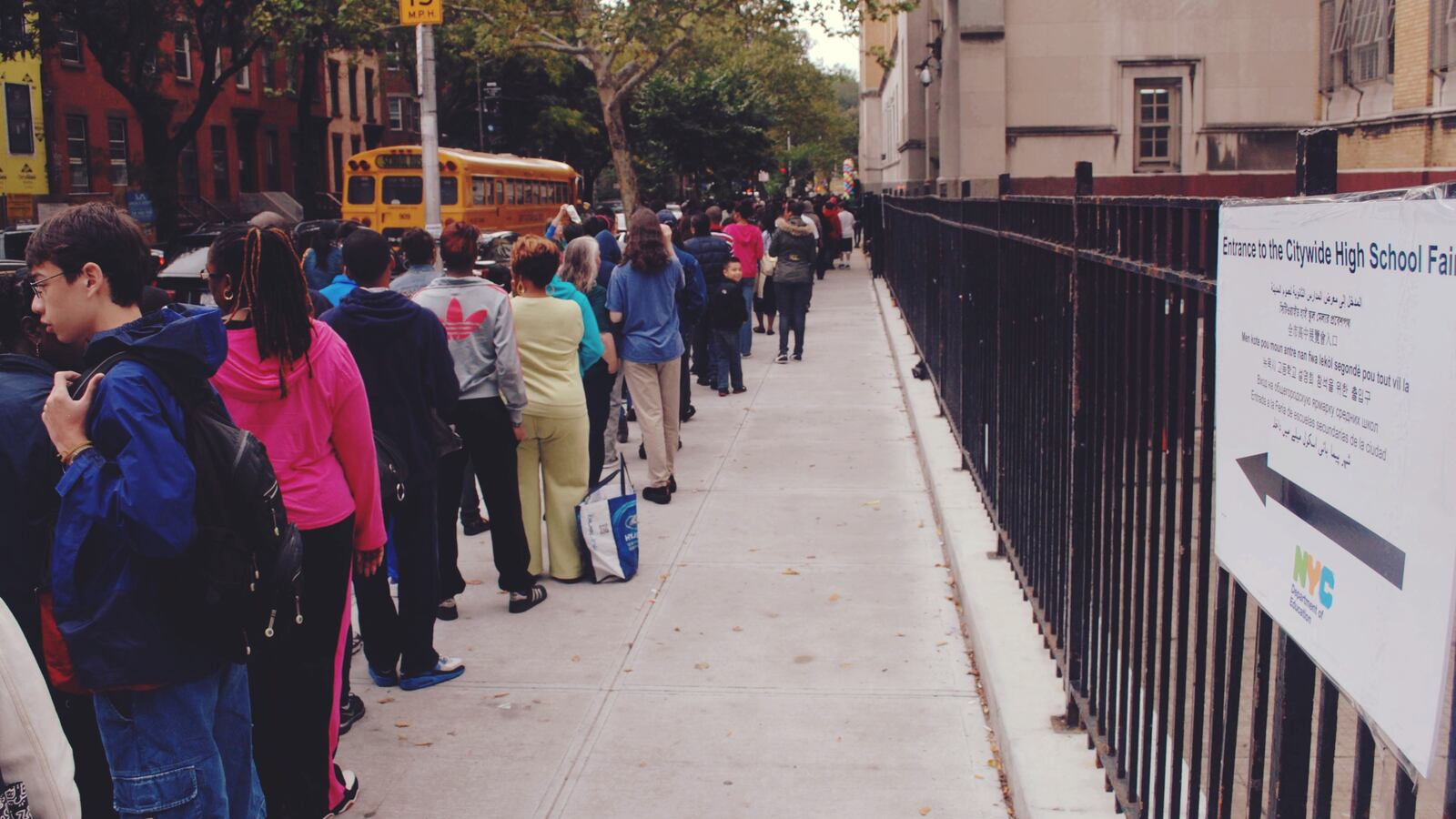It’s just become easier for students to transfer between New York City schools — a big change for the labyrinthine school system, where it has been notoriously difficult to switch schools for more than a decade.
Thanks to a change in city regulations passed last week, parents can now request a new school for their child if he or she “is not progressing or achieving academically or socially.” Since 2003, transfers have been granted for a limited set of hardships, including serious safety concerns, medical issues, or extreme commutes.
Limiting transfers was meant to minimize disruption for schools and for students, officials have explained. “It wouldn’t be practical and it wouldn’t be beneficial for a student’s education to change schools every single year,” a Department of Education spokesman told Chalkbeat in 2009.
But that approach had downsides, especially at the high school level.
Some students got trapped in violent schools because transfers were available only to students who could show they had been victims of violence. Other students found themselves stuck in small schools with limited course offerings — a particular challenge for students whose interests and goals might have shifted since the high school application process in eighth grade.
A 2009 report by the New School’s Center for New York City Affairs included stories of students like one young mother who planned to drop out because she was unable to transfer to be closer to her baby’s child care. It recommended reintroducing the “guidance transfer,” or a way for a student to move from one school to another that might be a better fit.
That’s what happened last Wednesday, when the Panel for Educational Policy passed the new policy with little fanfare. Now, parents can request a guidance transfer, and the city’s central enrollment office will make a final decision.
“It’s about time,” said Clara Hemphill, the founding editor of Insideschools, the school-review website. “Because our schools are so highly specialized and stratified by academic ability, it’s particularly troublesome that a kid could be stuck.”
The new process will be personalized. Education department documents say that officials can request and review different evidence for each case, and the district superintendent must approve any transfer requested for academic reasons.
That flexibility reflects the de Blasio administration’s preference for individualized solutions to students’ and schools’ problems. (This approach has been on display in the past when Chancellor Carmen Fariña has advised concerned parents at public meetings to email her directly.)
In contrast, Joel Klein, the Bloomberg administration’s formative chancellor, argued even recently that systems can break down when exceptions are made. “You cannot have a choice system and then say to the kid, ‘You can transfer.’ It’s a choice system,” Klein told the Observer in 2014.
The new option raises questions about whether well-informed parents might try to use it to circumvent the usual school-choice process. It’s also unclear what level of academic or social trouble the department will see as meriting a transfer.
“The goal of implementing guidance transfers is to ensure we are doing as much as possible so students are in schools that meet their needs,” department spokesman Will Mantell said Monday. He said the city would be providing principals with additional guidance.

